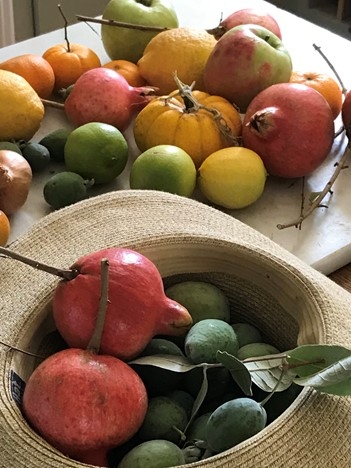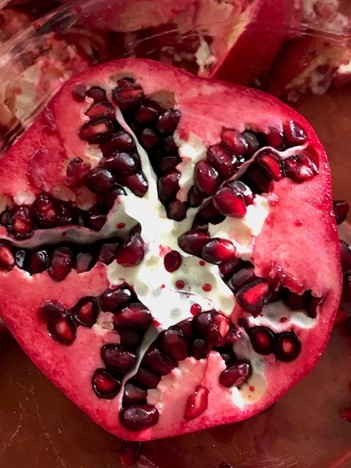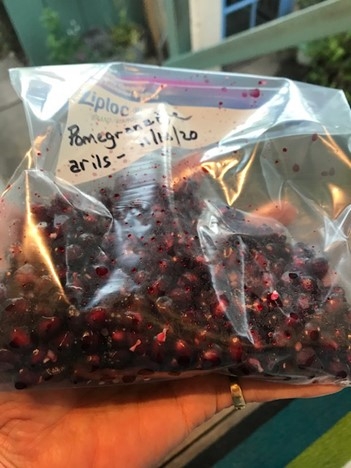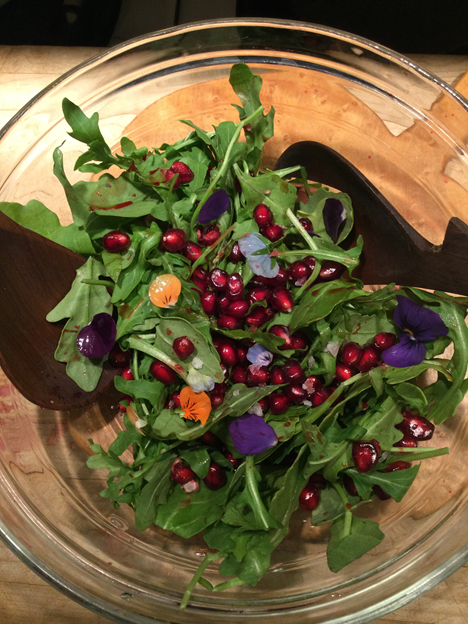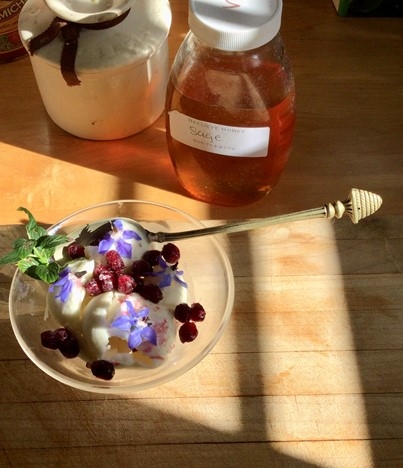I stood by our courtyard wall and worked my spade into the hard, clay soil. I'd always wanted to grow pomegranates, but my shaded half acre of Monterey pines and oaks in Cambria ruled out that possibility. Here I stood at my new/old 1930's home in sunny San Luis Obispo, and I saw pomegranates in my future.
Gardeners are patient optimists. It took about 12 years before my trees began to produce, but when they did, we were buried under their cargo of hand-sized, rosy fruits. Their fleshy, garnet arils were better than any I'd ever bought in a grocery store, but frustration became the byword of the harvest. How to break into the leathery skins? How to preserve them once I finally pried the gem-like morsels from their pithy, white beds?
This year, after graduating from the UC Master Food Preserver volunteer training program, I felt hopeful that I could process and preserve baskets of the ripening autumn fruit, but I was overwhelmed. It took about two hours and a dozen tries before I finally figured out how to extricate the arils without damaging them.
I washed the pomegranates, and with a sharp paring knife made a 1/2-inch-deep incision circling the fruit from bud to stem. I placed it on a cutting board covered with parchment paper (to prevent staining) and thumped it gently with a big, wooden spoon. With one quick twist (hands on each side of the cut fruit), I was able to separate them and expose the arils.
I tried various methods of preserving my harvest and turned to So Easy to Preserve, my dog-eared Co-operative Extension book from the University of Georgia. This year's crop is one big experiment, and I won't know for another couple of months what worked best for me.
About a third of my arils were packed into mason jars and covered with a cold, 30 percent syrup, 1 3/4 cups of sugar mixed with 4 cups of water. I sealed them tightly and tucked them into my freezer.
Another third were done in the tray pack method, spread onto a layer of parchment paper on a cookie sheet, and put into the freezer for two hours, then poured into labeled, quart bags and returned to the freezer.
The final third was simply dry packed into containers and frozen. I've used a few bags of them for salads, rice dishes, desserts, syrups, and snacks. They taste good, but the texture is slightly different from that of the fresh arils.
All of my unprocessed pomegranates are stored whole in the refrigerator, but not in the produce drawer, which is too humid and causes molding.
Next year, if my crop is as bountiful as this one, I hope to make some jelly, and I'll use this recipe suggested by the University of Florida Extension.
|
Pomegranate Jelly |
|
|
Yield about 6 half-pints |
|
|
3 ½ cups pomegranate juice (about 5 pounds) |
1 package powdered pectin |
|
5 cups sugar |
|
|
To prepare juice: Cut pomegranates in half. Extract juice from red seeds with a juice reamer. Strain juice through a damp jelly bag or several layers of cheesecloth. Measure 3 ½ cups juice. |
|
|
To make jell: Combine juice and powdered pectin in a large saucepan. Bring to a boil over medium heat, stirring constantly. Add sugar, stirring until dissolved. Return to a rolling boil. Boil hard 1 minute, stirring constantly. Remove from heat. Skim foam if necessary. Ladle hot jelly into hot jars, leaving ¼ inch headspace. Adjust two-piece caps. Process 10 minutes in a boiling-water bath canner. Source: Ball Blue Book of preserving 2008. |
|
One last word of wisdom. Cover all your work surfaces with wax, parchment, or freezer paper and wear a dark apron! The juice from the pomegranate will stain everything. I found splotches of red from my floor to my ceiling!
Editor - Master Food Preserver Program Coordinator
